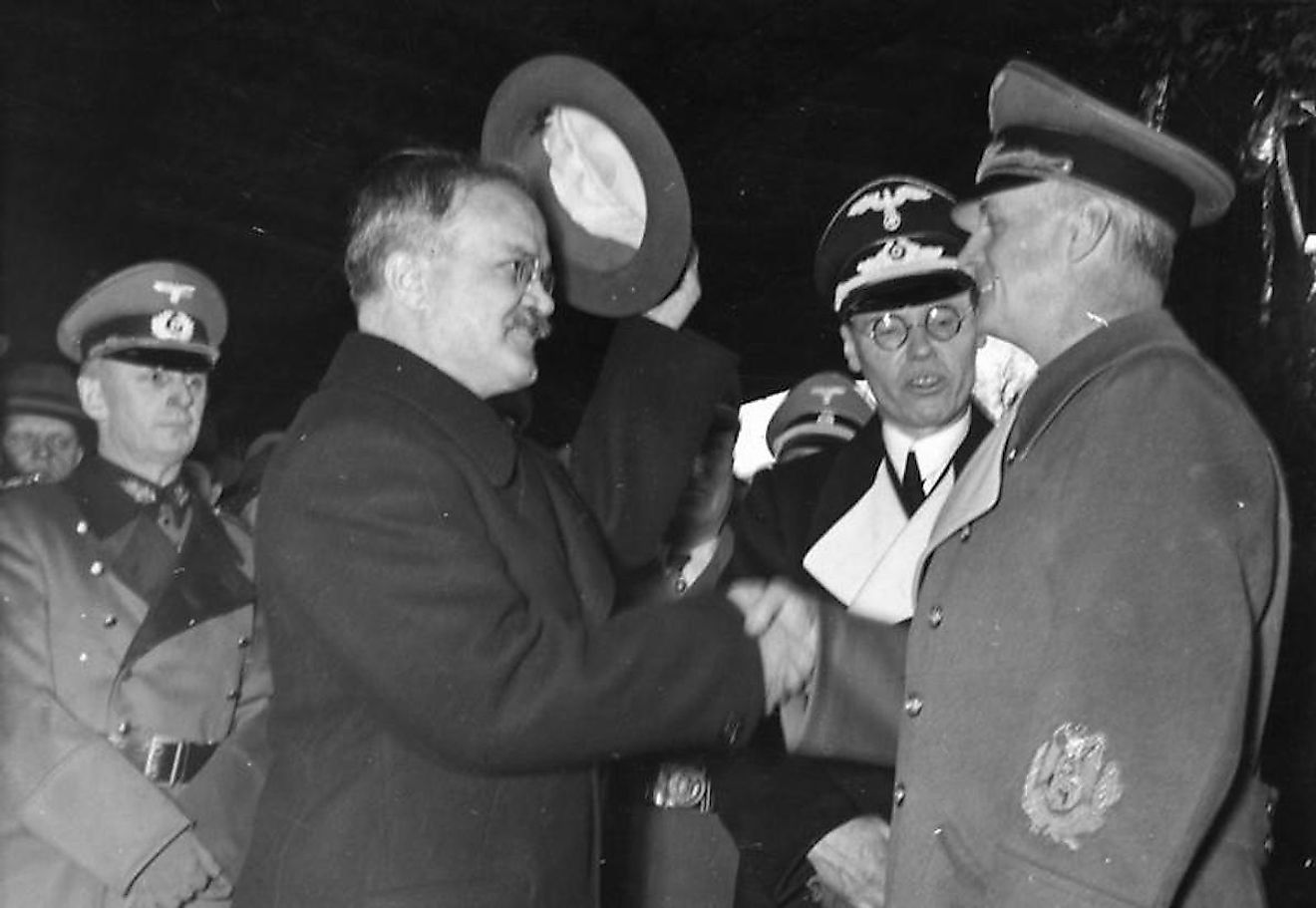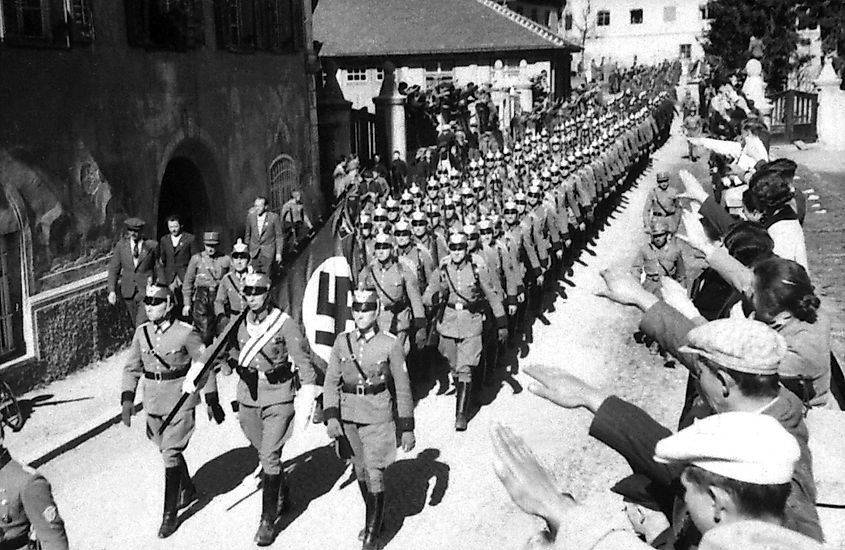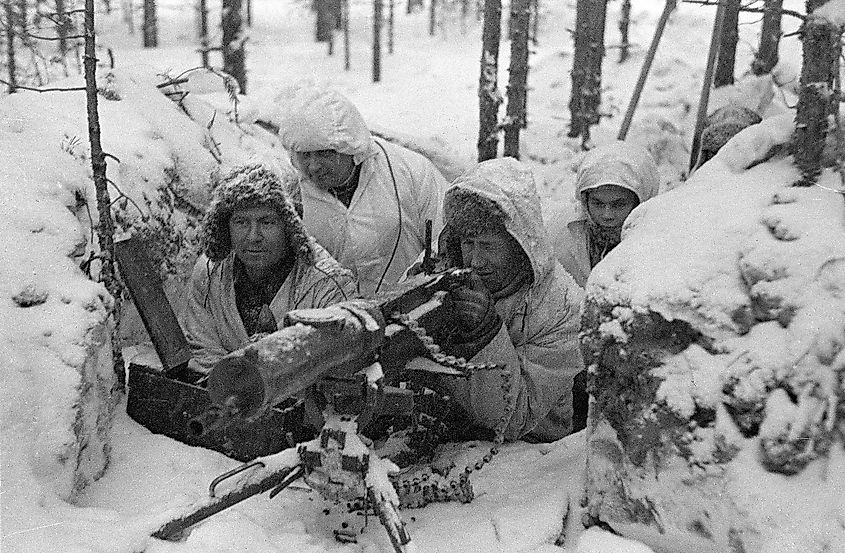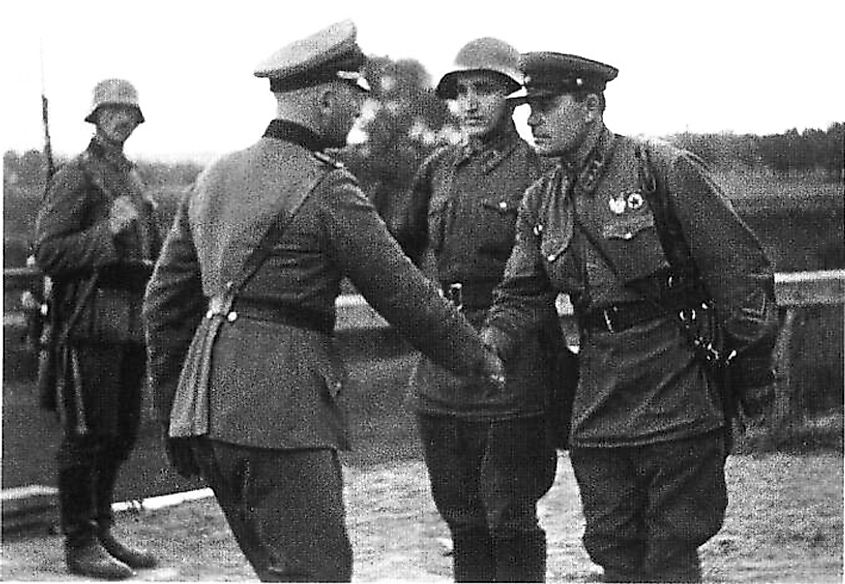
German-Soviet Pact
The late 1930s saw increasing aggression from Nazi Germany following the Nazi annexation of Austria and Czechoslovakia. However, Hitler's primary interest was in a war with the Soviet Union (USSR). But, with the United Kingdom (UK) and France being Soviet allies, this necessitated that Germany deals with them first while also preventing retaliation from the USSR. All this culminated in the Molotov-Ribbentrop Pact, a non-aggression treaty between Germany and the Soviet Union on August 23, 1939.
German Aggression In The 1930s

Adolf Hitler became chancellor on January 30, 1933. Despite some measures that indicated he was interested in diplomacy, like a peace treaty with Poland in 1934 and a rapprochement agreement with the UK in 1935, Hitler's foreign policy was generally antagonistic. For instance, in October 1933, Germany left the League of Nations. Then, Hitler reintroduced conscription in 1935, dramatically increasing the size of Germany's army. On March 7, 1936, Hitler remilitarized the Rhineland, a region of western Germany that bordered the Netherlands, Belgium, Luxembourg, and France. This was followed by a November 1937 meeting with his military leadership, in which Führer established his timeframe for war--putting it between 1943 to 1945. The following year, Germany annexed Austria and the Sudetenland, a region of Czechoslovakia that contained mostly German speakers. The rest of Czechoslovakia was then annexed in March 1939. Thereafter, Hitler set his sights on Poland.
Hitler's Understanding Of Slavs And Marxism
Before explaining the pact that allowed Germany to invade Poland without fear of Soviet retaliation, it is necessary to establish Hitler's view of Slavs and Marxism. According to Hitler, the nature of the world was one of struggle between races. A key component of one race winning in this struggle was having enough living space (Lebensraum). Therefore, Hitler believed that gaining access to living space in the East was crucial for the "victory" of the "Aryan race." When paired with his view that Slavs were inferior to Aryans, this laid the groundwork for a genocidal conflict against the Soviet Union. This was further compounded by Hitler's belief that Marxism (as well as capitalism and democracy) was introduced by "the Jews" to subvert the struggle-based nature of the world. It is necessary to keep these beliefs in mind when understanding the Nazi-Soviet Pact of 1939 since doing so helps one understand the enormous shock it was to the international community, with Germany signing a non-aggression treaty with its ideological and racial enemy.
The Molotov-Ribbentrop Pact

The Molotov-Ribbentrop Pact, named after Soviet Foreign Minister Vyacheslav Molotov and German Foreign Minister Joachim von Ribbentrop, was signed on August 23, 1939. The terms were as follows: Germany and the USSR agreed not to attack each other either. Furthermore, they also agreed not to support a third party in a war against one of them and to remain in contact regarding affairs of mutual interest. The expiration date for the agreement was in ten years, with the option to renew it for another five years.
Crucially, the pact also contained a protocol that divided Eastern Europe between Germany and the USSR. The Soviets were given the Baltic states (Estonia, Latvia, and Lithuania), Finland, Bessarabia (modern-day Ukraine and Moldova), and eastern Poland, whereas Germany was given western Poland. Of course, since the war had not yet begun in Europe, this part of the treaty was initially secret. However, it would not stay that way for very long.
Aftermath

On September 1, 1939, Germany invaded Poland. Then, on September 17, the Soviet Union also invaded the country. These invasions were followed by the USSR attacking Finland on November 30, 1939, marking the beginning of the Winter War. The next year, the Baltic states were annexed and turned into Soviet Republics. But, as the USSR fought wars of imperialism in Eastern Europe, Germany was fighting its own war in the West. Furthermore, as 1940 turned into 1941, German troops began amassing on the border with the Soviet Union. Then, on June 22, 1941, the Third Reich invaded the USSR (this invasion is known as Operation Barbarossa), rendering the Molotov-Ribbentrop Pact null and void.

In conclusion, the Molotov-Ribbentrop Pact occurred immediately before the outbreak of World War II. This pact allowed Germany to invade Poland without worrying about retaliation from the Soviet Union. However, due to Hitler's beliefs about Slavs, Marxism, and Lebensraum in the east, peace between Germany and the Soviet Union was always going to be temporary, as demonstrated by Operation Barbarossa less than two years later.











